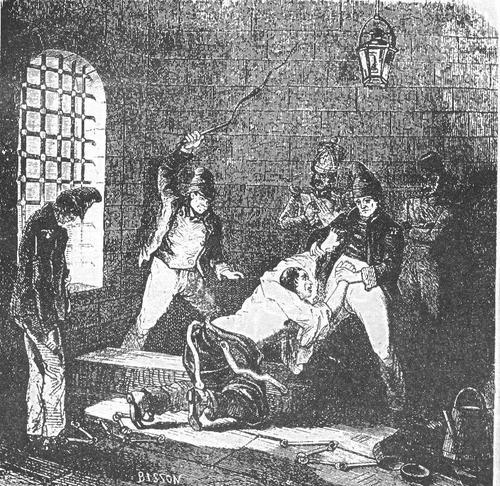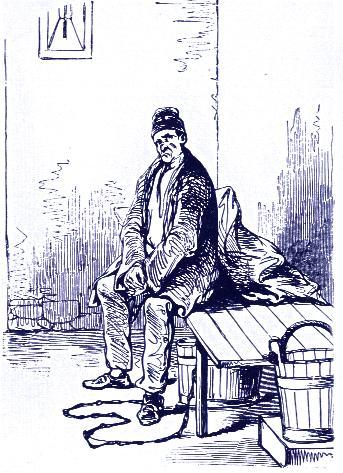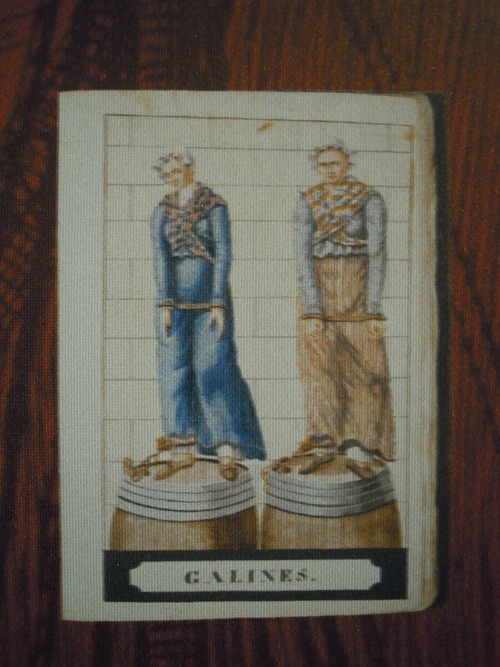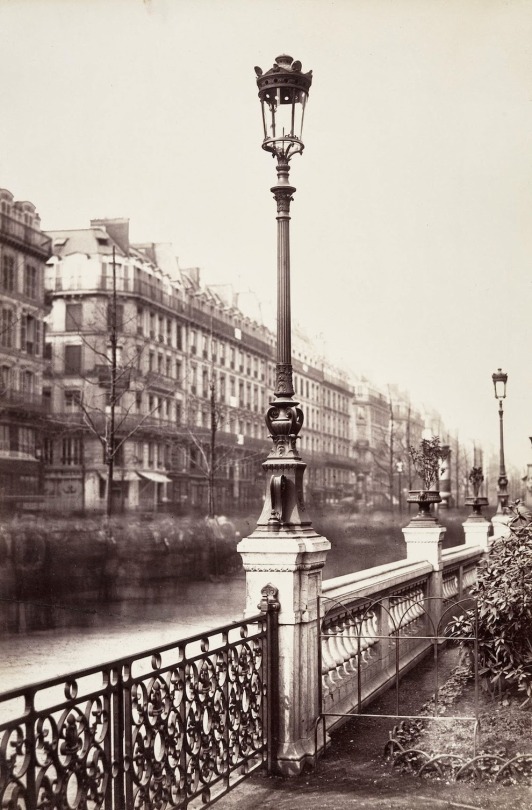Text
Lovely chapter. Father Fauchelevent makes an appearance! But before that...
Valjean is so desperate and terrified by Cosette’s state that he risks revealing his presence to the man in the garden (why is no one sleeping at night?). Moreover, he acts typically Valjean, trying to solve the problem with money. Literally, the first thing he says instead of greeting is, “One hundred francs!” And then the man recognizes him as Madeleine.
Fauchelevent is adorable. Abridged versions cut him unmercifully, and it’s so unfair. I love his manner of speaking, his quick wits, and the way he respects and adores Valjean. To be honest, the only Valjean-related ship that makes sense in the Brick is that with Fauchelevent. Just look at them: “Fauchelevent took Jean Valjean’s two robust hands in his aged, trembling, and wrinkled hands and stood for several minutes as though incapable of speaking.” With him, Valjean and Cosette will finally find shelter. Most importantly, Cosette is safe, warm, and rosy. At least this part of their adventures ends happily.
We also see here how quickly Valjean forgets about the good deeds he did for other people. Like it is something banal, routine, and forgettable. No wonder Fauchelevent finds this forgetfulness offensive. Valjean really has no idea what a treasure he is.
11 notes
·
View notes
Photo










Roger Allam as Javert, the role he originated and who I like to call “the first and best.” Also, here is a link to a lovely article about Mr. Allam, in which he talks briefly about Javert among other things.
http://www.express.co.uk/entertainment/tv-radio/391827/There-s-more-to-Roger-Allam-than-an-arresting-manner
79 notes
·
View notes
Photo

Philip Quast’s gaze
Watching the TV-series ‘Ultraviolet’ tonight revealed an unexpected close-up worth saving for posterity.
23 notes
·
View notes
Text
when someone tells you that you look like/act like your favourite fictional character
(⊙‿⊙✿)
44K notes
·
View notes
Photo

this way i imagined Javert when i was reading the book))
121 notes
·
View notes
Photo




For @thebanguette, June 5th prompt!
A Little Fall of Rain. Grief, loss, and the emptiness left behind by those we love when they depart.
273 notes
·
View notes
Note
So, there have been partial answers to this question, but I wanted to ask about all the possible punishments in Toulon. Any crime, any era, just everything you know about them. Feel free to go crazy with details. ;)
Well, that took time. Sorry about that, but I hope it has all the detail you wanted…
A word on sources:
My main sources are Maurice Alhoy’s “Les bagnes” and “Bagne de Toulon: 1748-1873” (cited as “BdT”), a helpful compilation put together by the Academie du Var (in which I have unfortunately already found a mistake). Then there’s the so-called “Code penal de la chiourme”, the bagne’s rule-book after 1828, which is only 21 lines… Finally, PrudencePaccard and me have had a chance to see the bagne registers and the punishment registers. The latter exist only from times between 1828 and 1868, unfortunately, but they’re still highly interesting. I’ve extracted the info from the hundreds of photos we took and compiled a spreadsheet, if anyone is interested in statistical information (not representative of course). Also, my first few attempts at posting this exasperating me about tumblr’s formatting, I had to vent the frustration by turning it also into a nicely formatted pdf-file… Stuff I do in my free time…
Punishments from the actual galleys (16th to early 18th century) and, partially, the transitional period (second half of the 18th century)
Cutting off the ears and/or nose
A common punishment for thieves in the free world until the Revolution. Both Alhoy and BdT report this being a punishment until the Revolution, the latter claims it punished fighting. (Not) Fun fact: Jean Marteilhe, a Huguenot sentenced to the galleys for life in the early 17th century, says that the galley-slaves caps were too short to cover the ears. My theory is that this was so that nobody without ears could hide the fact…
Piercing the tongue with a red-hot iron
According to BdT this punished blasphemers. Haven’t seen it anywhere else, though.
Suspension de l’antenne (suspension from the galley yard)
“Antenne” is the name given to the long yard at the top of a latin sail.

(Picture source: Wikipedia)
A rope would be passed under the convict’s arms, he would be hoisted up on the yard and then left to make one weird flag. For how long? I have not actually been able to find any info on that. The latest source I have for this punishment is 1784.

(Entry in one escape-register from the bagne de Toulon. The text is: “Et par Jugement de la Prevoté de la Marine du 20 avril 1784 pour evasion au recidive - Suspension a l’antenne, Bastonnade et deux ans de double chaine dont 2 mois rivé (?) à ?” Picture Source: Taken at the Service historique de la défense)
It either fell into disuse during the Revolution or was probably even formally abolished then. As far as I can tell, it punished mainly/only escapes, but I can’t exclude other options.
Amende (Fine)
Yes. I kid you not. The Ancien Regime differentiated between honorable and dishonoring fines. I don’t know any details and I especially don’t know how the hell they expected a galley slave to pay a fine, but I have a source: The crime was escape, the sentence was the galleys for life, a flogging… and an honorable fine. If it still made any difference to the guy that it was an honorable fine… I honestly doubt it.

(Picture from the same escape register. Text: “Pour Jugt de la prevote de la marine a Rochefort le 12 Juin 1776 a eté condne. pour evasion a faire amende honorable et aux galeres a vie pour Evasion” (sic for all missing accents). Picture Source: Taken at the SHD in Toulon).
Punishments existing in the galleys and the bagne
Execution
Of course. During galley times, the prime methods were apparently breaking on the wheel, burning at the stake and hanging. It was not used often, though. Galley slaves already died like flies and their work was badly needed after all. Louis XIV went so far as to request of his courts to keep the number of death sentences small and the number of life sentences large; he probably wouldn’t have appreciated further decimation of his human steam engines.
The Revolution of course abolished all of these execution methods. In the bagne, they were replaced with firing squad executions for some reason. Probably because of the military context? It wasn’t until the end of the Empire or the Restauration that the decision was taken to use a guillotine in the bagne, but only after several executions by firing squad had ended up taking rather long… Commissaire Reynaud or his predecessor (sources aren’t clear there) first tried to have a guillotine made in Toulon and found himself in front of the most obstinate refusal that even mass punishment couldn’t overcome. A guillotine was finally ordered from Draguignan, but it arrived in such a bad shape that it couldn’t be used. And again, the convict blacksmiths and carpenters refused to get it into working shape. Finally, according to Alhoy on the day before a scheduled execution, Reynauld (this time definitely him) convinced them by threatening to have the man in question executed on the badly working guillotine, thereby possibly making his death a slow and painful one. Needless to say that everything was working perfectly the next day…
The entire chiourme (name given to the entirety of convicts) had to attend, kneeling, caps in hand, lifers in the front rows. The condemned man would be led through with his coffin following him. To make it worse, when executions still happened by firing squad, everyone had to then go by the body in single file…

(An execution as drawn by Pierre Letuaire. Picture Source: Somewhere on the internet; I forget)
Murder was of course always a crime that entailed the death sentence. Sodomy was one before the revolution; the punishment was burning at the stake. Enticing or being part of a revolt was definitely so in the 19th century, possibly also before. The bagne’s rule book also included that simply hitting a guard was a capital offense. Some writers (Alhoy, among others) cite cases where convicts who wanted to commit suicide would lightly injure a guard, just to be sentenced to death. However, I have examples to the contrary: Entries from the bagne register and the punishment register show that convicts have hit, injured and, in one case, even killed guards and not been executed. I lack detailed information, of course (the punishment registers just contain five words on the crime, the date and the punishment), but that rule does not seem to have been applied quite as strictly as Alhoy would have us believe. Surprisingly enough, executions were far from common in the bagne. I don’t have exact numbers, but between 1816 and 1827, there were 54 violent deaths in all the bagnes – meaning executions, suicides and murders. PrudencePaccard and me haven’t found a single death sentence when going through the registers, by the way… (Edit: Not true anymore, I have by now found one in approx. 1500, see here: http://trompe-la-mort.tumblr.com/post/83245316086/a-bagne-death-sentence-on-record )
Sentence prolongation
Well, that one’s well known to all Les Mis fans… A prolongation for three years was the typical punishment for escape and theft of more than 5fr. Seriously, that’s it, according to the Code pénal de la chiourme. And escape was by far the most common reason for a sentence prolongation. There was a time between 1807 and 1817 where escape could get you 24 years – however, I still have to find the slightest indication who got 24 and who got 3 years in that time period. Most of the 24-year-sentences where commuted to 3 years in 1817, at least if the convict was still alive… Oh, and before the revolution, escape could get you a life sentence. As for other reasons for sentence prolongations, I have only found two cases: In 1817, one man was given life for “vol avec effraction en complicité” (breaking and entering and he had at least one accomplice). It was probably counted as recidivism… In 1852, another man got 6 months for a fight. Again, what was so special about this one fight, I don’t know. The administration considered sentence prolongation to be the second-harshest punishment (after death, of course) existing in the bagne. Since it was considered so harsh, it was as good as never combined with other punishments. Valjean’s five years of which two on the double chain actually seem rather unlikely…
Double chaîne (Double chain)
The double chain seems to have originated in galley times. Apparently, it originally consisted of actually putting a second chain on someone or a chain that weighed the double of a normal chain (I’ve read both). Jean Marteilhe mentions that chains of different weights were used, but without explaining a consistent system of punishment and reward. By Vidocq’s time, double chain convicts were all put in one “salle” (No. 3 for Vidocq), chained to their beds day and night and never allowed out. In the Code pénal de la chiourme, double chain is basically the substitution for sentence prolongation given to lifers. However, Vidocq makes it sound as though every escapee would serve his sentence prolongation for escape on the double chain, no matter whether they were lifers or not. This could simply be the time (1800 for Vidocq vs. 1828 for the Code penal). Escape attempts sometimes warranted shorter double chain sentences (several months); one escapee got away with 5 days of it. Even the person who put the information into the man’s register entry wrote “only” in there…

(Entry for Nicolas Guilly from the main bagne register. The important text is: “et par Jugement rendu par le Tribunal marite. special en date du 22. juillet 1811 a été condamné pour son évasion du 27. mai 1811 à cinq jours de double chaine seulemens. (sic)” Picture source: Still the SHD in Toulon.)
Bastonnade (Flogging)
Well, that is probably no surprise. Despite the name suggesting otherwise, a stick (bastonnade is from Old French “baston”, Modern French “bâton”, stick) was usually not used. The implement of choice was a rope, usually tarred or knotted. Some sources speak of a “garcette” (maritime vocabulary, the English word in this context is “starter”), others of the aforementioned tarred rope; Vidocq and an 1810 visitor surprisingly actually speaks of “coups de baton” (stick blows) in the context. In the 19th century it was actually standardized to a rope with a length of 60cm (~2 feet) and a diameter of 2cm (a bit less than one inch). Simon Mayer, a communard sentenced to hard labour for life, speaks of an executioner who used a rope with only half that diameter – because he was so strong that using the heavier rope would have resulted in him killing the convicts. I’m still unsure what to think of that…
During galley times and when galleys were still used as hulks, the condemned man would be stretched over the walkway in the middle of the galley. If you look at this illustration…

(Illustration to Jean Marteilhe’s memoirs, but I don’t know the illustrator.)
…you can see that there’s an elevated walkway separating the rowers on either side. This was called “coursie” or “coursier”. Jean Marteilhe, to whose memoirs this picture is an illustration, says that a “Turkish” (in that time meaning Islamic) prisoner would carry out the flogging and that a naval officer would stand behind him also with a stick in his hand to beat the “Turk” if he wasn’t flogging hard enough. By the time of the actual bagnes, floggings were the job of a convict executioner. The condemned man would either be put flat on a low wooden bench, called “banc de justice” (justice bench), with one man immobilizing his legs and his arms tied, as shown in a drawing by Pierre Letuaire:

(Picture Source: Internet again)
Or this one by Jean-Joseph Clémens:

(Watercolor by Jean-Joseph Clémens in his journal about the bagne that he basically wrote in the hope of a pardon. Photograph of the original thanks to the internet.)
Interestingly enough, all (that is, two) illustrations of this show that there was a mattress on the bench. I can’t even guess the point of that. Alternatively, the condemned man would have to kneel in front of the bench, hands handcuffed (or not) and held steady by another man, as illustrated in Alhoy’s book:

(From: Maruice Alhoy “Les bagnes”)
Floggings were given on the bare back and shoulders, sometimes including the backside (although that seems to have been more accident than intent). Sources again vary on whether it was executed publicly or not. Simon Mayer says publicly, Jean-Joseph Clémens claims it would be executed in front of the salle that held the most dangerous prisoners, but the drawings by Letuaire and the one found in Alhoy’s book suggest otherwise. The number of lashes varied greatly depending on the era and there seems to be something terribly unhealthy about a tarred rope, seeing as an early 19th century Botany Bay convict would probably have laughed about the number of lashes given here. Jean Marteilhe calls fifty lashes a serious health risk and eighty lashes a death sentence. Unfortunately, the number of lashes given was not recorded during the 18th century. During the 19th, different sources cite different upper limits of lashes ranging from 50 to 100. Several sources agree that most people would faint after ten lashes; Vidocq adds that most people die after six or eight bastonnades from an “illness of the lungs”. For the time where I have sources, the biggest number of lashes given is 50 (for theft of salted meat and attempted escape, both in 1828), the lowest five (for smoking in 1848) and during the 1830s to the 1850s, less and less lashes were dealt out. Simon Mayer claims in 1872 that six lashes cannot be borne without permanent health issues and that twelve lashes would certainly result in death. It’s not clear whether he actually ever saw somebody die from it or whether that’s convict gossip… The guy who got 10 lashes in 1873 for attempting to escape certainly survived it. It is certain that people died from floggings in the bagne, though.
Oh, and the executioner would get the victim’s wine ration of the day…
According to the Code penal de la chiourme, flogging offenses were: filing through one’s irons, being found with anything that could serve as a disguise, stealing less than 5fr, drunkenness, gambling, smoking, selling or damaging one’s personal effects (who would buy a bagne uniform, I wonder?), writing without permission, having more than 10fr, hitting another convict, disobedience and insubordination.
As always, there’s no real consistency and in the registers most people punished for insubordination did not actually get the lash and others who shouldn’t have did: Two guys who stole 35fr/77fr, another who hit a foreman with an iron bar or one guy who hit a guard…
For those of you who are writing slash, this might be relevant: “sodomy” or even the attempt was punished by 40 lashes. It’s one of the few cases where a punishment is consistent.
Punishments exclusive to the 19th century bagnes
Renvoi des éprouvés (Demoting a trustee to a rankman, to use the vocabulary of another country and another time)
“Éprouvé” can be loosely translated as “tried and tested”. It was the word given to convicts who had earned certain privileges through good behavior, usually the privilege of lighter work or of not being chained two by two or chained at all. Some say that a mattress was another such privilege. According to Dumas (“Une année à Florence”), they wore violet caps, but that seems to have been a temporary thing. The éprouvés had their own salle (~communal cell) and just being put there was already a privilege. “Renvoi des éprouvés” therefore usually means to be excluded from this building, sometimes definitely, sometimes for a couple of months. As far as I have seen, it simply accompanied every punishment given to an éprouvé, but it could also be a punishment by itself. In the latter case, the reasons were varied, going from insolence, insulting a nurse via possession of forbidden objects to constant drunkenness and laziness. This is not even mentioned in the Code pénal de la Chiourme.
Cachot (Solitary confinement)
Like solitary confinement everywhere… Letuaire provides a drawing of a cell:

Sentences went from a couple of days to three months as far as I can tell. According to Alhoy, there was a maximum for a single sentence (namely, one month), but cumulative sentences could lead to people spending up to a year in solitary. At some times, convicts in the cachot were required to pick oakum, but that does seem to stem from a later period (1830s and after). Reasons are once again varied, although gambling, insolence, fighting, possession of forbidden objects and disobedience show up often, as do theft and smoking. Among the more amusing reasons, let me cite: one month of solitary for “two people having slept under the same blanket”, another month for “being caught fishing and lying that he was fishing for a foreman” and, less amusing, just plain wrong, solitary “until new order” for “grave suspicion of having stolen a jacket”. So much for the presumption of innocence… Claiming to be ill so as not to work, was, in a surprising bit of consistency, worth 15 days of solitary from the 1820s to the 1860s at least. Later on, I also find sentences to “cellule” (cell), which I think is safe to assume is the same thing. But then there’s also “casemate” and that can’t be the same thing, as one guy got a year of casemate and a month of cachot for having passed an unauthorized letter. I still don’t know what to make of this, but I have passed this question on.
Retranchement
I don’t actually know how to translate that word which describes another punishment not present in the Code pénal de la chiourme. It consists in taking away a convict’s wine ration for a certain time, considered one of the lightest punishments. Convicts got 0.48l a day, half of it in the morning, half of it in the evening. In Brest and Rochefort, there were times when the convicts got 0.96l of cidre (Brest) or beer (Rochefort) instead. The wine was distributed at one end of the salle and had to be drunk right there and then. And you could not refuse it, leading to Islamic convicts apparently provoking this punishment so that they wouldn’t have to drink alcohol – we’ve seen several examples in the punishment registers that tell such a story. The duration went from a day to a month and sometimes just “until new order”. It is unfortunately never marked when such an order came… The first reason for it was, logically, drunkenness… Others included playing cards, insolence, going fishing, working badly, fighting… a wide variation of reasons. You could also say that after 1840, it took over from flogging more and more.
La salle des Indociles
Analogue to the « salle des éprouvés », the badly behaved convicts also got a “cell” to themselves. It could have been just a classification, but some descriptions actually sound a lot like double chain (insofar as the convicts were never allowed out). Vidocq’s description of the salle n° 3 might be this; the fact that he at some point mentions the double chain as a separate punishment indicates such; however he never uses any word like that. As a punishment by that name, I can only find sources from after approx. 1840, which might explain why it’s not in the Code penal de la chiourme. Then, it usually accompanied other punishments and would also normally by limited to weeks or months; in a few cases to a year. I only have a handful of cases where it was the only punishment, for reasons as varied as helping in an escape, having read a newspaper (a crime for which Simon Mayer was expecting to be flogged 20-odd years later, had he been convicted – O consistency, where art thou?), theft of food, smoking, fighting, gambling…
Remise en couple
As mentioned above, good behavior could get a convict “free” from his irons. Rather than being chained to another man all the time, he would only keep his half of the chain, walk “freely” during the day and only be chained to his plank bed during nights. Or even just keep the manille, the iron shackle around the ankle. But since it was a privilege, it could also be taken away at any time… Sometimes it would be for a limited time (a month to a year), but it didn’t have to be. In 1852, one man was sentenced to be coupled again until his depart for Cayenne. Weirdly enough, the very same entry claims that he was liberated in 1837… Reasons: Pretty much everything you can think of.
Le ramas
The « ramas », probably from « ramasser », gather, was the argot word for a long iron bar that was fixed at one end of the plank beds. The convicts’ chains would be put on this bar and the bar was then locked from outside. It will look familiar to anyone who has seen/read “Papillon”. A convict sentenced to days or months (the most typical was two weeks, but it ranges from 5 days to 2 months) at the ramas would simply be left locked there day and night, a bit like a short-term double chain. He might or might not be put into handcuffs for the entire duration. The BdT-book also claims that his blanket would be taken away during the punishment. The reason for it was mainly insolence, but others got it for laziness, not being in bed in time (no, seriously), talking, drunkenness, fishing and swearing. It’s not mentioned… Oh, I’m getting too lazy for this. None of the following are mentioned in the Code penal de la chiourme. This drawing by Pierre Letuaire gives you an idea of what the ramas looked like (although the reproduced scene isn’t necessarily one of punishment):

Le tonneau (the barrel)
A public humiliation kind of punishment in which the convict would be sat on a barrel (hence the name, if you didn’t guess), heavily ironed and wearing a sign around his neck, detailing the reason for his punishment, see this drawing from the journal of Commissaire Reynaud:

(From the exhibit at the Musée de la Marine in Toulon. Also note the literal double chain…)
It was hardly ever (found a single possible count) a punishment on its own, but a preliminary to another punishment, typically a flogging. It usually happened to escapees and money-lenders. Men convicted of sodomy were dressed up as women for it, see this reproduction of another drawing from commissaire Reynauld’s journal:

(Ditto; “Galine” was a slang-word for homosexual)
Seeing as a sentence to the barrel was apparently not always recorded, I can only pass on this info from secondary sources.
A few words on French-Guyana
As this is the direct descendant of the bagne métropolitain, I count it among “all eras”.
Cachot/Blockhaus (Solitary confinement)
Differs from the next entry, Réclusion, only insofar as that those where the words used to describe shorter sentences and that more cities and camps had cells to that effect. “Blockhaus” is a word for casemate and the usage still confuses me… The standard punishment for everything that wasn’t worth Réclusion.
Réclusion
The ruins of the building labeled “Quartier disciplinaire” stand to this day on the St Joseph island. Long corridors of small cells with a walkway above them, where a guard would patrol. It was absolutely forbidden to speak or make any unnecessary sound. Sentences started with a year, but the typical punishment for escape where still those famous three years… The Réclusion punished any slightly graver rule infraction unless it was a capital crime. Papillon claims having heard from a guard that the longest anybody survived there was six years (probably not what he wanted to hear with his eight years in front of him…), but one Paul Roussenq, nicknamed “l’Inco” (short for “the incorrigible”) actually spent slightly over ten years there! The food rations were apparently not sufficient and the constant silence made people go crazy, as long solitary confinement does (Take that Eugène Sue). It was nicknamed “La mangeuse d’hommes” (the eater of men) and it seems to have fully deserved that name…
That’s what I have… But if there are follow-up questions… Well, feel free.
64 notes
·
View notes
Text

Fandom: Les Miserables
Character: Eponine Thenardier
Sample Size: 2,784 stories
Source: AO3
99 notes
·
View notes
Text
NEW VERSION. :)
4K notes
·
View notes
Text
I don't know what paddington is doing on that list, but it made me think of the time someone drew a picture of the queen with paddington after she died, and we had scores of people losing their minds at the idea that paddington bear wasn't the same kind of communist as them
12K notes
·
View notes
Text
The one, in which Jean Valjean decides that henceforward Cosette will be the centre of his life, the essence of his existence. On one hand, it's moving and lovely, but on the other, it will ultimately lead to his demise. Les Misérables is filled with characters who have compelling reasons to die for and those who have reason to live for. However, once that reason is removed, they are immediately lost and have nothing left but to succumb to death. Oh...
It's no wonder Valjean freaks out when he finds Cosette icy-cold and unresponsive to external stimuli. "There are moments when hideous suspicions assail us like a cohort of furies, violently invading the confines of our minds. When it concerns those we love, our caution conjures up all manner of madness." Poor Hugo; I have a strong feeling he's speaking from his own tragic experience here. Fortunately for Valjean, he will soon find a way to revive Cosette, unlike Hugo and his daughter.
In reality, the chapter isn't as sad as my mood makes it out to be.
And we have another peculiar sound of the convent—the tinkling of a bell produced by some mysterious figure in the garden.
18 notes
·
View notes
Text
I'm confident that I've discovered my absolute favourite Valvert author. All three Valvert fanfics by zamwessell are breathtakingly good and beautifully written. Both Javert and Valjean are so recognizable and unforgettable. I love how they change, develop, and adapt to each other and to their circumstances. I like them so much that I wish I could devour both of them. It's a pity that there are only three of these fanfics.
12 notes
·
View notes








